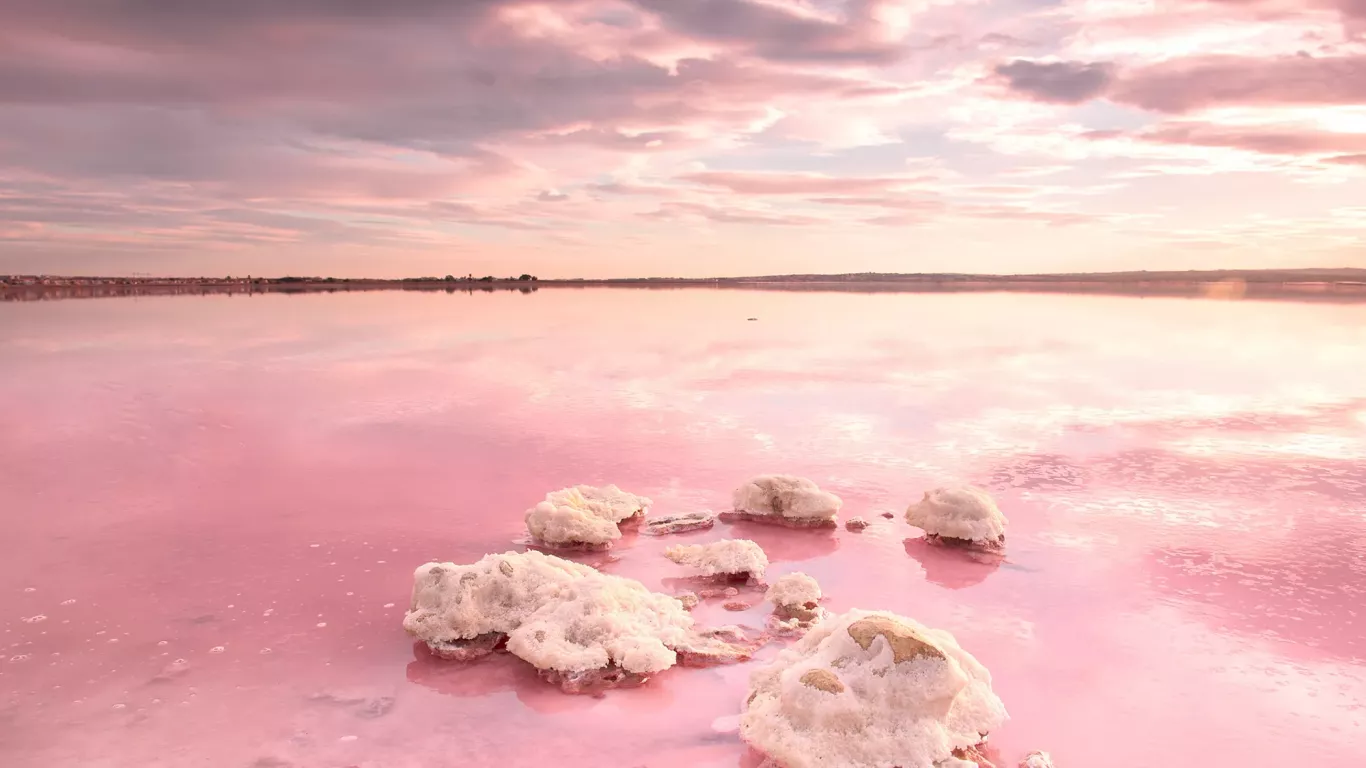Climate, mineral water and peloid from the Laguna Rosa de Torrevieja (Alicante - Spain) and its potential use in thalassotherapy

The objective of this work was to study the climate, the composition of the water and the natural peloid extracted from the coast of the Laguna Rosa de Torrevieja (Alicante-Spain) to evaluate its possible uses as therapeutic agents in Thalassotherapy.
Laguna Rosa is an exoreic hypersaline lake (390 g/L) that was connected to the sea until the Quaternary period. Today it receives water from its neighboring La Mata lagoon and brine from the washing of the El Pinoso deposit.
Its climatology has been studied over the last fifty years: maximum, minimum and average values of ambient temperature; daily hours of sunlight per month; daily average incident shortwave solar energy; proportion of clear days per month; rainy days per month; average wind speed per month; variation of the average relative humidity by month and, with these data, the bioclimatic diagram of Torrevieja was determined, resulting in that only August was left out of the human climatic comfort diagram of Olgyay, although the months of July, August, September and October are outside of comfort limits due to heat.
The mineral water of Laguna Rosa is hypothermal, with strong mineralization, hypersaline, sodium-magnesium chloride and extremely hard. As is well known, skin treatment in thalassotherapy depends substantially on the skin action of its mineral elements and the composition of its salts. Hypertonic saline media in general have their own environment-dependent microbiota that provide additional properties for use in dermatological and cosmetic treatments.
Under the climatic circumstances of the lagoon, a saline peloid is generated due to precipitation ordered by salt saturation, whose generic name is "evaporites." This phenomenon is caused by the massive evaporation of water, which causes salt precipitation, first of carbonates, then of sulfates and finally of chlorides. In this way, an aerobic surface environment rich in sodium chloride and an anaerobic environment is created inside, with sulfates and carbonates. These circumstances stimulate full microbial development with and without oxygen.
Under the conditions of light, temperature, saturation and pH of the Laguna Rosa, these microorganisms generate active substances on the surface and in the depth of these precipitates, giving rise to an active sludge with beneficial properties for the health of the skin.
Under these conditions of high mineralization and due to the environmental characteristics, a multitude of extremely halophilic microorganisms coexist in the lake, providing the characteristic pink color to the lagoon.
Among these microorganisms, prokaryotes (cyanoprotists) and eukaryotes such as some diatoms and Dunaliella spp. stand out, especially Dunaliella salina. Some oxygen-dependent phototrophic microorganisms (cyanobacteria) and others anoxic; as well as chemoautotrophs: sulfur-oxidizing bacteria, aerobic and anaerobic heterotrophs, sulfate-reducing bacteria (BRS) and archaea (Archaea). All of them have a great capacity to release molecules that are very suitable for the well-being of the skin.
In addition to obtaining the centesimal composition of the peloid, its histogram and particle size distribution curves were studied; thermal values and cooling/time curve; hardness profile and its instrumental texture.
As a conclusion from all these studies, it can be deduced that the climatic characteristics of Laguna Rosa fit a possible thalassotherapy use. Likewise, the mineral water of the lagoon, whether in its natural state or diluted, has a possible therapeutic use and the peloid would have a potential thermotherapeutic use, although, given that the precipitating mineral sedimentation is mainly inorganic, with low water content, Low hardness and low adhesiveness, it releases heat very quickly. Therefore, it is proposed to apply it "Egyptian style" or apply it manually through a massage.
Finally, all this therapeutic potential described must be contrasted through the corresponding and appropriate clinical studies.